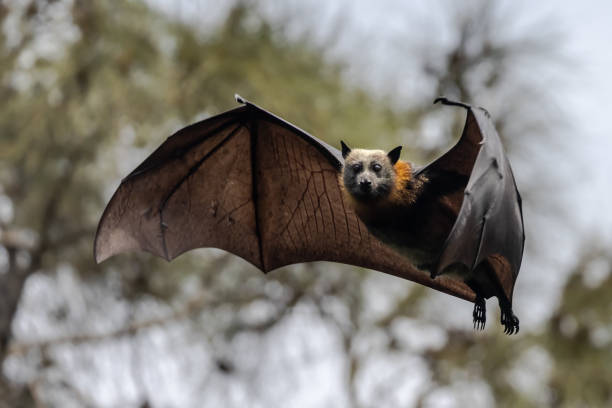🏡 Introduction
Modern life often distances us from the natural world—but what if the wilderness is closer than we think? In our own backyards, we share space with an incredible array of wildlife. From songbirds and squirrels to hedgehogs and foxes, these creatures enrich our home environments with wonder, color, and life.
In this comprehensive post, we’ll explore:
- Backyard biodiversity—who lives where, and why?
- Unique behaviors and adaptations of common and surprising backyard species.
- Human–wildlife interactions—ethics, etiquette, and education.
- Designing wildlife‑friendly spaces for healthy coexistence.
- Conservation insights and how small actions add up.

1. Backyard Biodiversity: Nature Behind the Fence
a) Identifying Familiar Faces
Around the world, certain wildlife species thrive in backyards:
- Birds: Sparrows, finches, robins, jays, and woodpeckers.
- Mammals: Squirrels, hedgehogs (in UK, EU), rabbits, raccoons (in North America), foxes, opossums.
- Amphibians & Reptiles: Frogs, toads, lizards.
- Insects & Pollinators: Bees, butterflies, ladybugs, fireflies.
These species may roam in urban, suburban, or rural spaces—each adapting to our built environment.
b) Why They’re Attracted to Backyards
- Food sources: Bird feeders, compost piles, flowering plants, pet food.
- Shelter: Garden shrubs, woodpiles, pond edges, outdoor hedges.
- Water: Puddles, bird baths, ornamental ponds—vital in dry climates.
Even the smallest green space can host vibrant ecosystems when food, water, and shelter converge.
c) A Microcosm of Nature
Backyards provide insights into ecosystem dynamics: predator–prey relationships, pollination cycles, composting, and migration. They allow valuable hands-on learning about natural balances.

2. Fascinating Behaviors & Adaptations
a) Urban-Adapted Ravens & Crows
- Problem solvers: These corvids are known for shaping wires to extract food—a sign of tool use.
- Social intelligence: They hold “funerals,” communicate intricate warning calls, and even solve puzzles together.
b) Squirrel Acrobats
Squirrels demonstrate incredible spatial awareness and agility.
- Leap physics: Their prowess balances with high-speed decision-making.
- Cache memory: Squirrels use spatial and olfactory cues to hide thousands of nuts—and remember most.
c) Hedgehog Hibernation
In temperate zones, hedgehogs hibernate:
- Metabolic magic: Slow heart rates, low body temperatures—they can drop from 35°C to 5°C.
- Risks: Early spring awakenings or false hibernations can be dangerous due to scarce food.
d) Migratory Songbirds
- Navigation marvels: Through magnetic fields, star patterns, and landscape cues.
- Stopover spots: Backyard feeders help them refuel during spring/fall migration.
e) Bumblebees & Pollinators
- Buzz pollination: Bumblebees vibrate flowers to release pollen (e.g., tomatoes).
- Colony-based: Queens found nests; workers forage. Deviate from honeybee strictures and still operate within social frameworks.
f) Great Horned Owls
- Silent flight, strong talons. They often nest in tall trees even near houses. They help control rodent populations.

3. Human–Wildlife Coexistence
a) Benefits of Backyard Wildlife
- Pest control: Birds and bats reduce insect populations.
- Mental health: Nature boosts stress relief, joy, and mindfulness.
- Educational value: Kids learn ecology firsthand—metamorphosis, food chains, adaptation.
b) Common Conflicts & How to Mitigate
- Garden damage (rabbits, deer): Use natural repellents; install raised beds or fences.
- Rodent nuisances: Secure trash, compost, and pet food.
- Odors or droppings: Clean up food spills; maintain cleanliness around feeders.
- Pets vs wildlife: Supervise cats/dogs. Provide wildlife escape routes or deterrents.
c) Ethical Interactions
- Observe, don’t handle: Domestic animals can transmit diseases or stress wildlife.
- No habituation: Feeding habits should support but not create dependency.
- Wildlife rescue: Contact professionals for injured animals—not DIY.
4. Designing Wildlife-Friendly Spaces
a) Creating Habitat Layers
- Ground layer: Log piles, leaf litter—habitat for insects, amphibians, hedgehogs.
- Shrubs and bush layer: Nesting refuges.
- Tree canopy: Birds, squirrels, insects.
- Water sources: Bird baths, ponds—with sloped sides for amphibians.
- Wildflower gardens: Support pollinators, beneficial insects.
b) Seasonal Considerations
- Plant native species: They cater to local wildlife (e.g., oaks → caterpillars → birds).
- Early bloomers/Late bloomers: Provide food beyond typical growing seasons.
- Leave seedpods in autumn/winter for birds.
c) Shelter & Nesting
- Built bird boxes, bat boxes, bee hotels. Optimized for target species—spacing, entrance size, orientation matters.
d) Water Safety & Hygiene
- Change water weekly to avoid mosquitoes; provide shallow stones for birds/insects.
- Ponds should include gentle slopes and plants for access/shelter.
e) Avoid Harmful Chemicals
- Use organic gardening: avoid pesticides that harm bees and other beneficial insects.
- Embrace natural pest controls: ladybugs, lacewings, parasitic wasps.

5. Conservation and Backyard Impact
a) Citizen Science Contributions
- eBird: Record bird sightings online—helps track migrations.
- Butterfly counts/Bee surveys: Local parks and school programs.
- iNaturalist: Photo-based wildlife recording.
b) Threat Reduction Actions
- Reduce hazards like window reflections with decals or screens.
- Turn off exterior lights during migration peaks to prevent disorientation.
- Cover drains and fences to prevent entrapment.
c) Collective Influence
Backyard habitat efforts, when multiplied across neighborhoods, form vital ecological corridors—drastically improving regional biodiversity.
6. Surprising Backyard Visitors
a) Urban Foxes
- Come at dusk. Drawn to compost, pet food. Generally avoid humans and mostly nocturnal.
b) Amphibians (Frogs/Toads)
- Vital for pest control. Use rainwater harvesting and retain natural moisture zones.
c) Urban Deer & Wild Boar
- In some regions, expansive deer/wild boar wander into backyards.
- Fencing, repellents, and behavioral deterrents reduce presence.
d) Bats
- Excellent insect hunters. Prefer sheltered roosts like bat boxes. Also help with mosquito control.
e) Escaping Exotics
- Escaped pet turtles, lizards, etc., sometimes establish feral populations—often with ecological implications.
7. Backyard Wildlife Chronicles: Case Studies
a) The Floating Duckling Rescue
A homeowner installed a kiddie pond with easy entry points. During spring, a small mallard family took residence. The youngest duckling became stranded in a filter. The pond owner gently guided it back. The duck family later used the space as sanctuary.
b) Bird-Inspired Community Watch
A neighbourhood salon installs a webcam on a robin’s nest in a communal green patch. Residents observed the robin fledging and commented on nest-day rituals. The initiative sparked educational events and nightly lawn clean-ups around the nesting area.
c) The Hedgehog Highway Initiative
In parts of the UK, neighbours “superglue” wildlife-friendly holes in garden fences—allowing hedgehogs to roam and establish natural movement corridors across urban districts.

8. Practical Tips & DIY Projects
a) DIY Wildlife Projects
- Bird feeder: Construct from recycled materials; place in shady, predator-safe area.
- Bee hotel: Bundles of hollow reeds or drilled wood blocks.
- Pond bin: Retrofit a sturdy container with gravel/plants and a slope for easy wildlife access.
- Hedgehog smartphones: Motion-triggered cameras monitor night visits.
b) Seasonal Task Calendar
| Season | Key Activities |
|---|---|
| Spring | Clean feeders, refresh bird houses, start native wildflower planting |
| Summer | Maintain water levels, add shade coverings, install bee boxes |
| Autumn | Leave leaf litter, collect seedheads, tidy veggies, check for wildlife entryways |
| Winter | Provide fat-rich seed fats, monitor nests, check insulation boxes, ensure water isn’t frozen |
9. Backyard Wildlife Etiquette & Education
- Teach children simple lessons:
- Respect wildlife space—observe, don’t handle.
- Keep dogs focused when wildlife visits.
- Note seasonal signs like bird songs, frosty footprints.
- Organize “wildlife watch” events with neighbours—document sightings, host potlucks around conservation themes.
- Collaborate with schools: ask students to design wildlife gardens; create nighttime spectacles like glow-in-the-dark bat houses.

10. Future Outlook: Backyards as Biodiversity Hotspots
a) The Urban Greening Movement
Cities encourage rooftop gardens, green walls, and pollinator patches. Private backyards amplify these initiatives.
b) Smart Tech for Wildlife Welfare
- AI-powered bird feeders: recognize species and collect data.
- Smart cameras: record wildlife patterns, migrations, activity cycles.
- App-enabled citizen science: real-time sighting uploads, local trending eco-events.
c) Backyard Wildlife in Climate Action
- Microhabitats mitigate heat (shade, soil cooling via plants).
- Sequester carbon via trees and permitted shrubs.
- Manage water naturally—rain gardens assist in flood control.

🧭 Conclusion: Your Backyard, a Living Classroom
Every tap root and feather is part of the planet’s vast tapestry—and tomorrow’s stewards may be watching from your lawn. Backyards are more than decorative: they’re active arenas where wildlife thrives. With a few simple steps—food, water, shelter, no pesticides—we can welcome nature home and learn from it.
Your #PetPatch can become a sanctuary where the secret lives of raccoons, bats, hedgehogs, and birds unfold nightly. They’re your neighbors, your teachers, your connection to the wild.
By observing, conserving, and celebrating backyard wildlife, we play small but vital roles in global biodiversity and ecological resilience. So open the gate, plant the wildflower, hang the nest box—and experience the wonder unfolding just beyond your doorstep.
🔗 5 Resources to Learn More
- [The Wildlife Trusts – Garden Management Guides]
- [RSPB (Royal Society for the Protection of Birds) – Garden Wildlife in the UK]
- [Cornell Lab of Ornithology – Bird Feeding & Nesting Tips]
- [North American Native Plant Society – Pollinator Plant Lists]
- [iNaturalist – Backyard Wildlife Identification]
